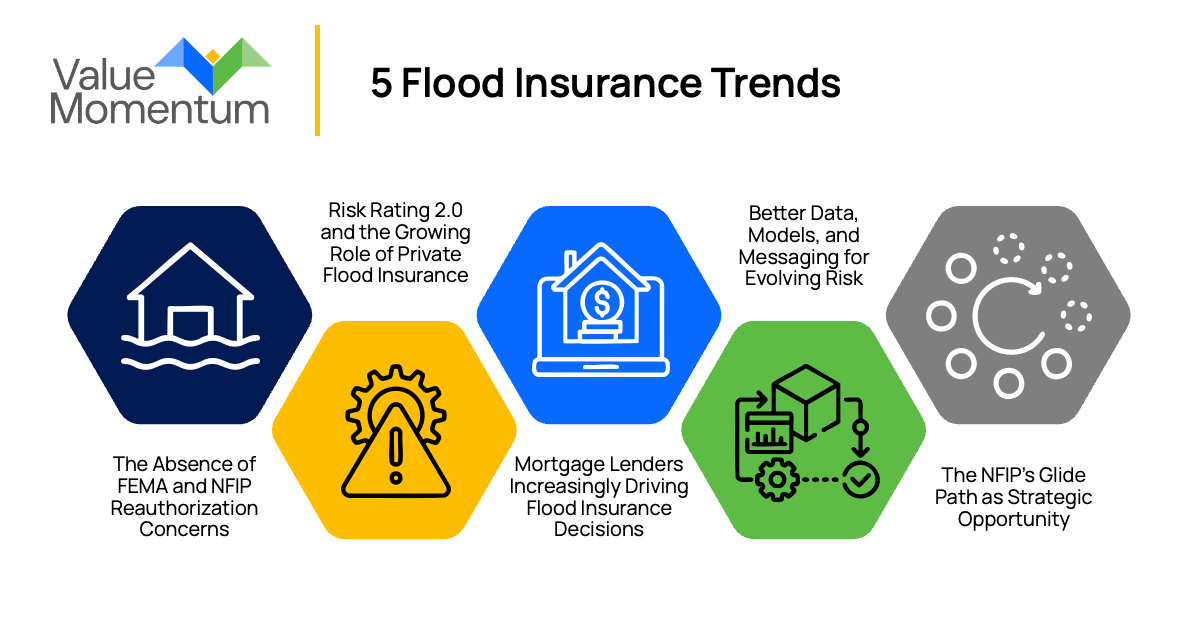Last month, flood insurance professionals gathered in Dallas, TX, for the National Flood Conference, just weeks before historic flooding struck nearby communities across the state. Co-hosted by the American Property Casualty Insurance Association and the Reinsurance Association of America, the event featured more than 10 vendors showcasing their solutions.
Throughout the conference, industry experts explored issues that are now top of mind for Central Texas, including Federal Emergency Management Agency (FEMA) reauthorization, claims adjusting, policy coverage, private flood insurance, climate change, reinsurance, and the role of technology in modernizing the flood insurance industry.
I was honored to attend and engage with peers at this pivotal conference. In light of recent events, one thing is clear: Flood insurance must continue to evolve as both insurers and policyholders face growing risks and shifting realities.
5 Flood Insurance Trends to Watch
The discussions at this year’s National Flood Conference reflected the urgency of the current moment — one marked by increasing flood severity, rising property losses, and growing questions about the future of federal involvement in flood risk management.
Across the two-day agenda, five key themes stood out that insurers, reinsurers, and other stakeholders should continue to monitor in the months ahead.

1. The Absence of FEMA and NFIP Reauthorization Concerns
One of the most notable developments was the absence of FEMA at this year’s event. This absence, combined with the looming deadline to reauthorize the National Flood Insurance Program (NFIP) by 11:59 p.m. on September 30, 2025, left many attendees uneasy.
Historically, FEMA and Congress have consistently honored NFIP contracts — a track record that provides some reassurance. However, this year’s political climate has introduced new uncertainty. Discussions about eliminating FEMA entirely have raised serious concerns about the continuity of federal disaster assistance and the future of subsidized coverage for vulnerable communities.
2. Risk Rating 2.0 and the Growing Role of Private Flood Insurance
Risk Rating 2.0, FEMA’s updated methodology for determining NFIP premiums, remains a focal point of discussion, particularly in comparison to private flood insurance offerings. Some industry leaders view Risk Rating 2.0 as a step toward better alignment of rates with actual risk, but it has also increased premiums in many regions, opening the door for private insurers to offer more competitive alternatives.
As flood modeling capabilities improve, private carriers are increasingly equipped to assess and price risk accurately. For insurers, understanding how Risk Rating 2.0 compares to private flood insurance solutions will be critical for navigating this shifting landscape and identifying new market opportunities.
3. Mortgage Lenders Increasingly Driving Flood Insurance Decisions
Mortgage lenders are becoming a more active force in determining flood insurance requirements. In many cases, they are mandating coverage even when properties fall outside of traditional FEMA flood zones. As a result, insurers must be prepared to educate both lenders and consumers on the evolving risk landscape and the importance of comprehensive coverage.
This shift also presents an opportunity for insurers to develop more flexible, tailored offerings that address lender mandates without overburdening policyholders. As climate risk expands well beyond mapped zones, the market for voluntary and lender-driven flood policies is expected to continue growing.
4. Better Data, Models, and Messaging for Evolving Risk
Flood risk is becoming more complex — and less predictable — due to the convergence of factors like climate change, urban development, and extreme weather events. Conference sessions highlighted nuanced challenges such as distinguishing between wind vs. wave damage or addressing mudslides triggered by flooding after wildfires.
In this environment, insurers must rely on more sophisticated data and modeling tools to improve underwriting accuracy and claims response. Clearer marketing and communication strategies will also be essential for educating policyholders about coverage options, limitations, and risks they may not have considered, especially as public understanding of flood insurance remains limited in many regions.
5. The NFIP’s Glide Path as Strategic Opportunity
The phased approach to premium increases under NFIP’s Risk Rating 2.0, often referred to as the “glide path,” has created a strategic opening for private insurers. While some policyholders remain protected under gradual rate hikes, others are already facing the full cost of their actuarial risk.
This dual-speed environment gives private carriers the opportunity to step in with competitive pricing and more customizable policies. However, it also introduces complexity in how coverage is marketed and compared. Insurers must decide whether to position themselves as a more affordable alternative or as a differentiated solution that fills critical gaps left by the NFIP.
As the flood insurance market continues to evolve, collaboration across public and private sectors will be critical to ensuring communities are protected from increasingly complex and frequent flood events. The takeaways from this year’s National Flood Conference reflect both the challenges and the opportunities facing insurers in 2025 — from navigating NFIP uncertainty to advancing risk modeling and expanding private market offerings.
With political, environmental, and financial pressures all converging, insurers that act now to adapt their strategies, build resilience, and educate stakeholders will be best positioned to lead in this new era of flood risk management.
As flood events become more severe and unpredictable, insurers require more sophisticated tools to assess property risks and protect their policyholders. Learn how one Fortune 500 insurer used AI and aerial imagery to proactively identify vulnerabilities and improve underwriting decisions — even before disaster strikes.




